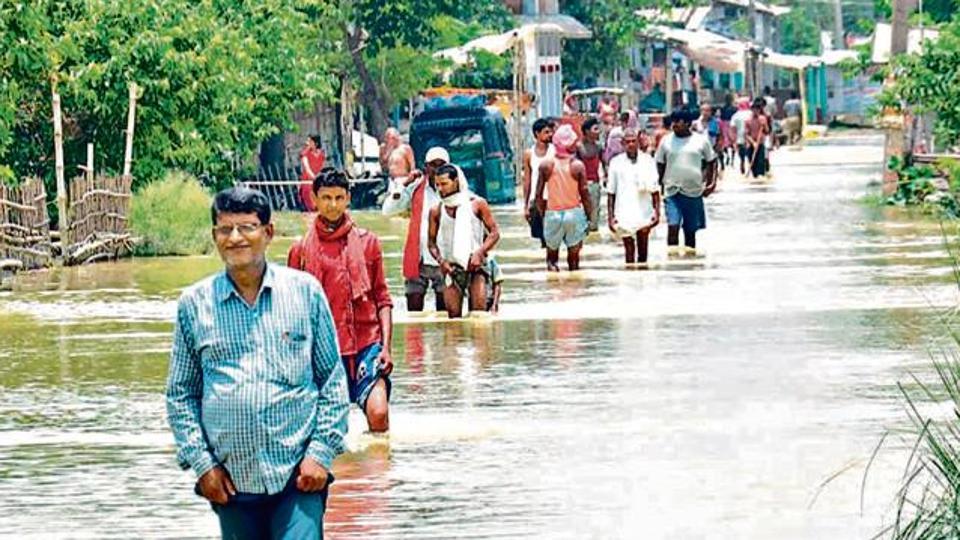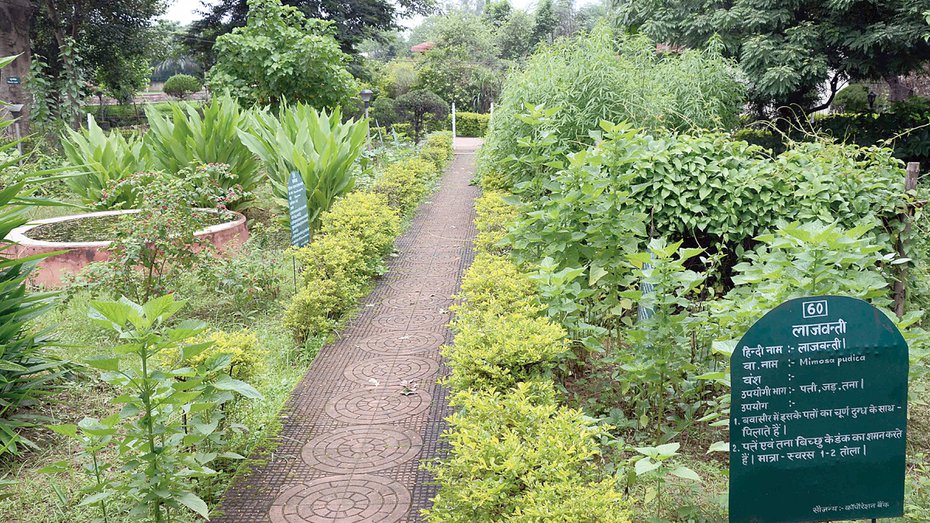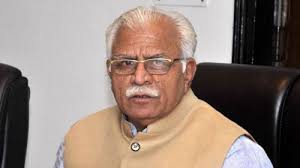Source: hindustantimes.com
Shakeela Khatoon, 60, poked into layers of mud for utensils sunk there by the recent floods that ravaged villages through Muzaffarpur district, including her own hutment in Bada Jagannath village in Musahari block.
Floods are an almost annual phenomenon in Muzaffarpur, which lies in the way of five Himalayan rivers that come down from Nepal. This year it was the Burhi Gandak river that spilled out in parts of the district because of heavy rains in the neighboring country.
“A similar flood had ravaged our village in 2017. Last year, we had drought. This year, the floods returned with a greater force and wreaked havoc,” Khatoon said, pointing at the rubble inside her house and craters outside. “But I have got used to the floods since my childhood and have learnt to live with them,” the woman said as her daughter-in-law and grandchildren continued the clean-up.
Some of the disasters that have affected Muzaffarpur over the past 16 months have seemed to border on extraordinary.
The floods this year affected around 400,000 people in 84 panchayats of nine out of the district’s 16 blocks. They were preceded by an outbreak of Acute Encephalitis Syndrome (AES) in May and June. The disease claimed lives of the 162 children across Bihar, with 137 casualties reported from the city alone.
The damage went beyond devastating floods and dying children. This year, Muzaffarpur was categorised as one of the most polluted cities in India as per a World Health Organisation study. Calamities appear to strike back-to-back in Muzaffarpur — floods, disease outbreak, hazardous air—and some repeat every year.
But the city has also witnessed tragedies entirely man-made. In fact, its year of disasters began after a report last April by Tata Institute of Social Sciences (TISS) blew the lid off allegations of years of sexual abuse, rape, torture and murder of girl inmates at a shelter home run by a non-government organisation in the city. Put all these events together and you get the picture of a city hit by a combination of natural disasters, manmade calamities, and pure criminality. And beneath it all, the underlying message: apathy of different kinds.
What is it that makes Muzaffarpur synonymous with bad news; who is to blame for it; and what lies in the future?
Muzaffarpur is the undeclared capital of upper Ganges, also known as North Bihar. About 6.2 million people live in the district of Muzaffarpur, spread over 16 blocks, two sub-divisions. It accommodates 11 assembly and two Lok Sabha constituencies.
It is the biggest city in the state after the capital Patna. But despite its numerical and political significance, Muzaffarpur doesn’t offer an easy life to its residents.
“We don’t have communal riots here,” said Rajiv Tulsyan, 55, a cloth merchant, stressing that despite cultural and religious differences, the Hindus and Muslims in the city have lived in harmony. “We have bigger challenges to confront — some of them beyond human control.”
SHELTER HOME SHAME
The city made national headlines on April 26, 2018 when TISS submitted its fact-finding report on Balika Griha, a shelter home for girls run by influential businessman Brajesh Thakur’s NGO, Sewa Sankalp Evam Vikas Samiti. The report submitted to the principal secretary of Bihar’s social welfare department pointed to sexual exploitation of inmates. The medical tests of all the 44 inmates confirmed rape and sexual abuse.
As investigations pointed to an entire chain of people in-charge of social welfare in Bihar — charity workers, bureaucrats, ministers — having enabled the exploitation, the state government asked for a Central Bureau of Investigation (CBI) probe. Soon after, the Patna high court and the Supreme Court intervened and shifted the hearing of the case out of Bihar.
At present, the witnesses are deposing in a Delhi court. The kingpin of the scandal, Thakur, has been shifted to Patiala jail and 20 other accused to New Delhi’s Tihar jail. The 42 inmates have been rehabilitated to shelter homes in Patna and Madhubani under government supervision.
Thakur’s NGO, which was granted the contract to run the shelter home by Bihar government, has been blacklisted and the building, which was constructed on encroached land, has been demolished.
Through all of this, the city had to quietly bear the national and international disgrace. “The shelter home incident is a result of the complete collapse of administrative machinery. A syndicate comprising the land, sand and liquor mafia and powerful contractors are ruling the roost in Bihar and making big profits. One cannot expect sanity or respect for law from them,” said Arvind Varun, a member of the People’s Union for Civil Liberties.
He emphasised that Thakur could not have dared to carry out the heinous crimes without political and administrative backing.
“Not long back, even a ‘lal topi’ [constable] used to spread fear among the criminals. The administration today seems to be handcuffed. Ad-hoc-ism in government appointments is making matters worse. How can you expect a teacher or a health worker to perform if he lives in the fear of losing his job after 11 months,” said Dr Om Prakash Roy, principal of the 120-year-old LS College. Muzaffarpur, he said, was and remains one of the most academically advanced districts in Bihar. “It is also the cultural capital of Bihar,” he said.
Eminent Gandhian and activist from the Bihar Movement of the 1970s, Chandrika Sahu spoke of Muzaffarpur’s descent from a being a hub for resistance movements before and after Independence. “Once a land of doyens like Gandhian and socialist Acharya Kripalani, freedom fighter and socialist leader Rambriksh Benipuri, Bihar’s first speaker, Ram Dayalu Singh, Gandhian LN Agarwal and [socialist leader] George Fernandes, who fought for the people, from the streets to Parliament, is now a centre for the mafia and criminals,” said Sahu.
Following the Muzaffarpur shelter home expose, the Bihar government led by Nitish Kumar’s Janata Dal (United) has updated the guidelines for shelter homes and hostels for girls across the state.
District Magistrate (DM) Alok Ranjan Ghosh said that since the exposure, the government directly monitors the operation of shelter homes.
“At present, we do not have any shelter home for women in Muzaffarpur.
But there are quite a few hostels for girls. CCTV cameras have been installed at vantage points in all such hostels. The movement of strangers is closely monitored without hampering the privacy of the girls.”
Ghosh added that all vacant posts of guards and wardens in girls’ hostels are being filled up, inspections by administrative officials have been regularised, and social audits commissioned.
AES OUTBREAK
The shelter home scandal had barely been forgotten when Muzaffarpur hit the headlines again with the AES outbreak. Still considered a mystery disease, AES is a group of clinically similar neurologic manifestations caused by several viruses, bacteria, fungus, parasites, spirochetes, chemicals and toxins. The disease most commonly affects children and young adults.
Its prevalence in the region is attributed to people eating a high quantity of litchis empty stomach (the region falls in the litchi belt), and the toxin the fruit releases.
As AES spread like wildfire in the region, claiming lives of children mostly from the economically weaker sections, hundreds of patients from in and around Muzaffarpur came pouring into the Sri Krishna Medical College and Hospital (SKMCH), the only government-run advanced medical facility equipped to treat AES cases.
Despite the outbreak being an annual affair, the hospital struggled to rise to the occasion with its 12-bed pediatric intensive care unit (PICU) shockingly insufficient for the incoming stream of patients.
Left with no option, the hospital made stopgap arrangements, accommodating children in every inch of empty space in the administrative building and the pediatric ward in the face of extremely hot and humid conditions.
The result was that while several lives were saved, many children died due to delay in getting medical attention. Once again, across India, people outraged at the slackness of the state and central government in dealing with the public health emergency.
SKMCH superintendent Sunil Kumar Sahi does not accept the blame. “A comparative study of casualties of last six years reveal that we have actually brought down the percentage of deaths this year,” he said.
“While in 2014, out of the 334 suspected AES patients admitted to our hospital 117 had died, this year against the total 465 admissions only 132 died.” On steps being taken to prevent such crisis in the future, Sahi said the union government has already sanctioned a 100-bed PICU on the campus, which should be ready by April next year. He hoped that it would suffice the requirement during any calamity of such magnitude.
The district magistrate said all public health centres in the district have been equipped to admit and treat AES patients, albeit the scarcity of doctors remains a worry.
“We are appointing ASHA workers, training them and equipping them with necessary kits to diagnose suspected AES cases at their homes and administer first aid before shifting them to nearby hospitals.” He said the plan is on to launch an AES awareness drive in villages from November and intensify it during the three months before the onset of the next summer.
DELUGE OF WOES
The summer led to the monsoon, which brings its own challenges.
This saucer shaped, low-centered city lies on the great Indo-Gangetic plains of Bihar. Every time it rains heavily in Nepal, the rivers flowing through Muzaffarpur get flooded, submerging several blocks and hundreds of villages and rendering lakhs of people homeless. For those affected by this year’s flood, life is still far from back to normal.
At work in the dingy lanes of Islampur’s Chudipatti, Mohammad Meraz Gouri, 25, pointed to the overflowing drains and broken roads that ring his renowned store, Baba Bangles, which has put Muzaffarpur’s bangle market on the fashion maps of Bihar, Nepal and even Bollywood.
Aishwarya Rai Bachhan and Anjali Tendulkar wore bangles sourced from the store at their wedding ceremonies. Islampur is largely a Muslim-dominated locality with most of its people engaged in bangle manufacture and its trading. Glittering bangle shops dot every inch of the congested lanes.
“I have grown up in Chudipatti, but I don’t recall the last time when the drains or roads were repaired. Water keeps overflowing from the drains and invariably spills on to the road, forcing people to wade through ankle-deep sludge. Monsoon only worsens the conditions,” he said while attending to his customers.
A few meters to the north of Islampur is the famous Sutapatti market, a predominantly Hindu locality and north Bihar’s biggest cloth trading center. Name any cloth manufacturer of the country, and a connection can perhaps be traced to Sutapatti.
The business adds up to several crores of rupees every day. Some of its cloth merchants, many of whom are migrants from Rajasthan and Gujarat, have lived in Muzaffarpur for more than 100 years.
Similar civic issues prevail here. The businessmen of Sutapatti market complained about poor garbage disposal, air and noise pollution and mismanaged traffic. But they have made their peace with the city’s problems.
It remains a land of opportunities for them and their future generations.
“It is one of Asia’s biggest textile hubs where clothes manufactured across the country are brought and traded from here across Bihar, north eastern states, parts of Uttar Pradesh and adjoining Nepal,” said North Bihar Chamber of Commerce and Industry president, Motilal Chaparia, adding that the annual turnover of Muzaffarpur’s textile market runs into thousands of crores. He refused to give a concrete figure, but he did note that the city’s textile trade gives direct and indirect employment to more than one lakh families and contributes immensely to the local economy.
Thousands of people are camping in makeshifts tents along the national highways, uplands and top of embankments. “We have lost everything in the floods,” said Mukund Yadav, pointing towards a vacant, undulating patch of land next to a breached embankment in Aurai’s Benibad village where his house and farmland existed. The water has receded, but it has left behind a thick deposit of sand and silt.
NOWHERE TO GO
Locals say that Muzaffarpur reels from the aftermath of floods for at least six months. “During this period, the entire village economy remains paralysed.
No crops, no schools and no business activities. Left with no options, scores of families migrate in search of livelihood every year.
Those who raise voices against the government’s failure in rehabilitating its own people find FIRs registered against their names,” District Congress president Bhagwan Das said.
“Water draining away from the upland districts, especially Sitamarhi, Sheohar and East and West Champaran, stagnates in Muzaffarpur, which is a plain area, and keeps spreading for days. Receding too takes a lot of time,” the DM explained.
Some allege that the relief and rehabilitation work is undermined by corruption. “Might sound strange to the uninitiated, but it’s an unconcealed truth that floods bring smiles to the government officials, especially those in the water resources department, as they make huge money from the earthwork that is carried out before and after the floods ever year.
Nobody thinks of a permanent solution to the crisis,” alleged Muzaffarpur’s Youth Congress spokesperson Ved Prakash. The district magistrate stressed that dams can’t be constructed on flat terrains. He said that safeguarding the hamlets by building embankments is the only solution to flash floods that come with high velocity and erosive value.
Water resources minister Sanjay Jha says a permanent solution to the perennial floods in north Bihar can only come from diplomatic talks between Indian and Nepalese governments.
Laxmeshwar Rai, minister of disaster management, also feels the same way. “The issue can be solved only through talks between the two countries,” he told a media gathering recently.
Not all of Muzaffarpur’s problems can apparently be solved in the near future, but for many of those who call it home there is nowhere else to go.
At Sadhana Bakery, Chudipatti’s lone baked-goods shop run by Mohammad Shakeel, 45, who grew up in the area and has seen the city stagnate over the years, said he wouldn’t consider relocating to a better place or a cleaner city.
“After all, my grandfather, parents, siblings, and all their children grew up here,” he said.
Dr Om Prakash Roy, principal of LS College, believes not much has been lost and the city can regain its old glory if the fear of the law returns and the local administration gets a free hand to do its work. “We love our city. Jeena Yahan Marna Yahan, Iske Siwa Jana Kahan [We live here and die here, where else can we go?].”







